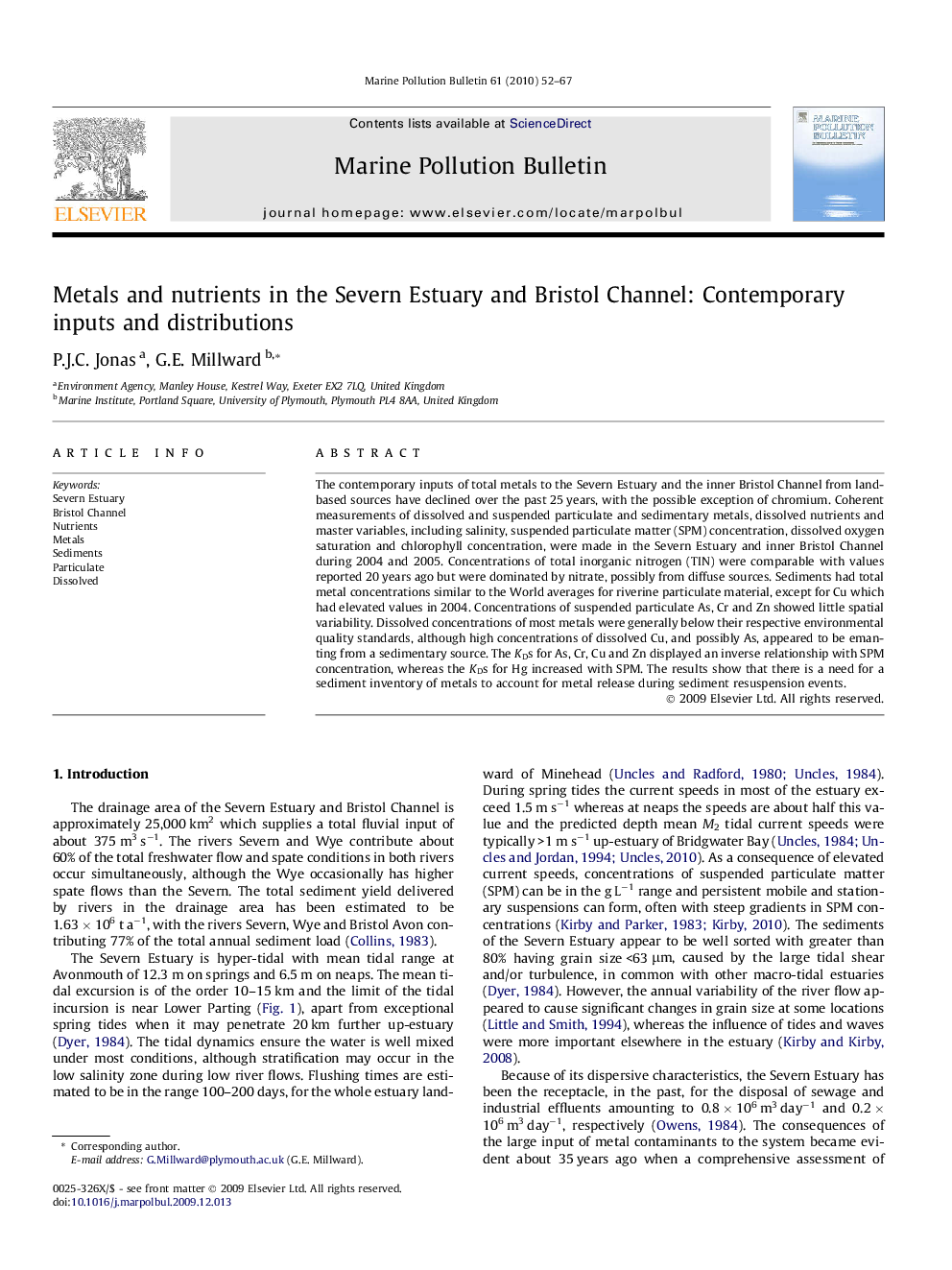| Article ID | Journal | Published Year | Pages | File Type |
|---|---|---|---|---|
| 6361543 | Marine Pollution Bulletin | 2010 | 16 Pages |
Abstract
The contemporary inputs of total metals to the Severn Estuary and the inner Bristol Channel from land-based sources have declined over the past 25Â years, with the possible exception of chromium. Coherent measurements of dissolved and suspended particulate and sedimentary metals, dissolved nutrients and master variables, including salinity, suspended particulate matter (SPM) concentration, dissolved oxygen saturation and chlorophyll concentration, were made in the Severn Estuary and inner Bristol Channel during 2004 and 2005. Concentrations of total inorganic nitrogen (TIN) were comparable with values reported 20Â years ago but were dominated by nitrate, possibly from diffuse sources. Sediments had total metal concentrations similar to the World averages for riverine particulate material, except for Cu which had elevated values in 2004. Concentrations of suspended particulate As, Cr and Zn showed little spatial variability. Dissolved concentrations of most metals were generally below their respective environmental quality standards, although high concentrations of dissolved Cu, and possibly As, appeared to be emanting from a sedimentary source. The KDs for As, Cr, Cu and Zn displayed an inverse relationship with SPM concentration, whereas the KDs for Hg increased with SPM. The results show that there is a need for a sediment inventory of metals to account for metal release during sediment resuspension events.
Related Topics
Physical Sciences and Engineering
Earth and Planetary Sciences
Oceanography
Authors
P.J.C. Jonas, G.E. Millward,
